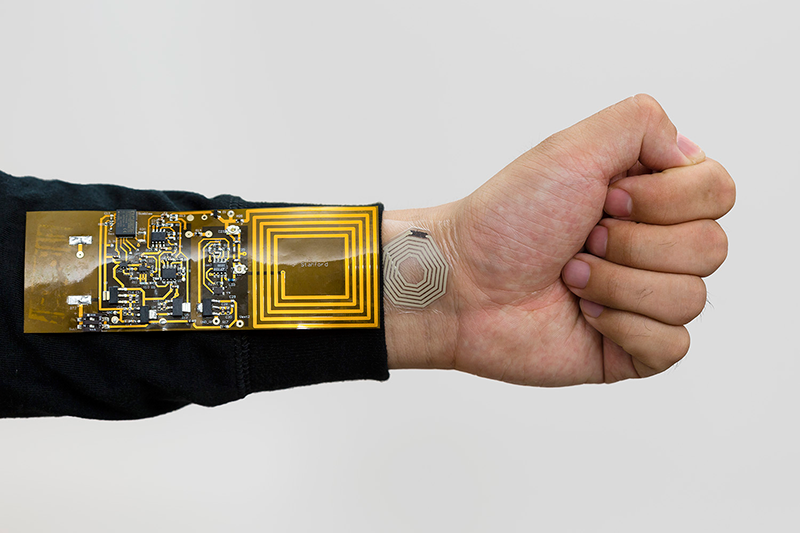
For monitoring health or conduct studies, flexible body-worn sensors are the best choice for wearable device developers. However, sensors currently available are bulky and require charging. Now, a group of engineers at Stanford have developed highly flexible sticker sensors that don’t have any on-board electronic chips or any other rigid components. These sensors are powered by nearby radiofrequency devices that can be integrated into clothing.
Related KIST Researchers Develop Hydrogel-Based High-Performance Sensors for Wearables
The researchers named their new device the BodyNet. “To demonstrate this wearable technology, the researchers stuck sensors to the wrist and abdomen of one test subject to monitor the person’s pulse and respiration by detecting how their skin stretched and contracted with each heartbeat or breath. Likewise, stickers on the person’s elbows and knees tracked arm and leg motions by gauging the minute tightening or relaxation of the skin each time the corresponding muscle flexed,” reports Tom Abate in Stanford News.
Zhenan Bao, a professor of Chemical Engineering at Stanford believes this wearable technology will first be used in medical settings such as monitoring patients with sleep disorders or heart conditions. Her lab is already trying to develop new stickers that monitors body temperature and stress by sensing sweat and other secretions. Bao wants to eventually create an array of wireless sensors that stick to the skin and work in conjunction with smart clothing to more precisely monitor a wider variety of health indicators than the smartphones or smartwatches, the report said.

“We think one day it will be possible to create a full-body skin-sensor array to collect physiological data without interfering with a person’s normal behavior,” said Bao, who is also the K.K. Lee Professor in the School of Engineering.
Through an antenna, the BodyNet sticker harvests a bit of the incoming RFID energy from a receiver on the clothing to power its sensors. It then takes readings from the skin and beams them back to the nearby receiver.
But to make the wireless sticker work, the researchers had to create an antenna that could stretch and bend like skin. They did this by screen-printing metallic ink on a rubber sticker. However, whenever the antenna bent or stretched, those movements made its signal too weak and unstable to be useful.
This study was reported in the journal Nature Electronics.











